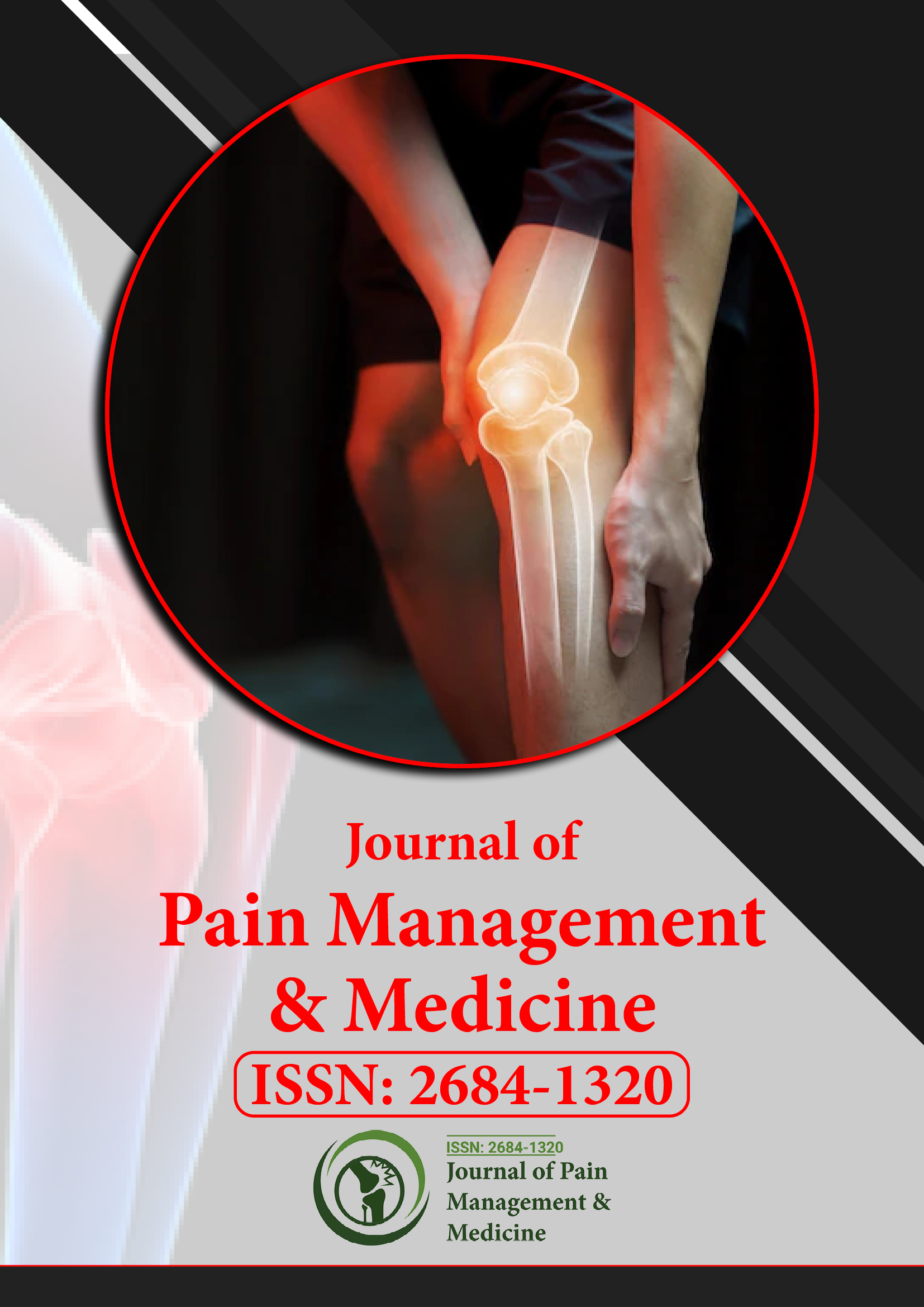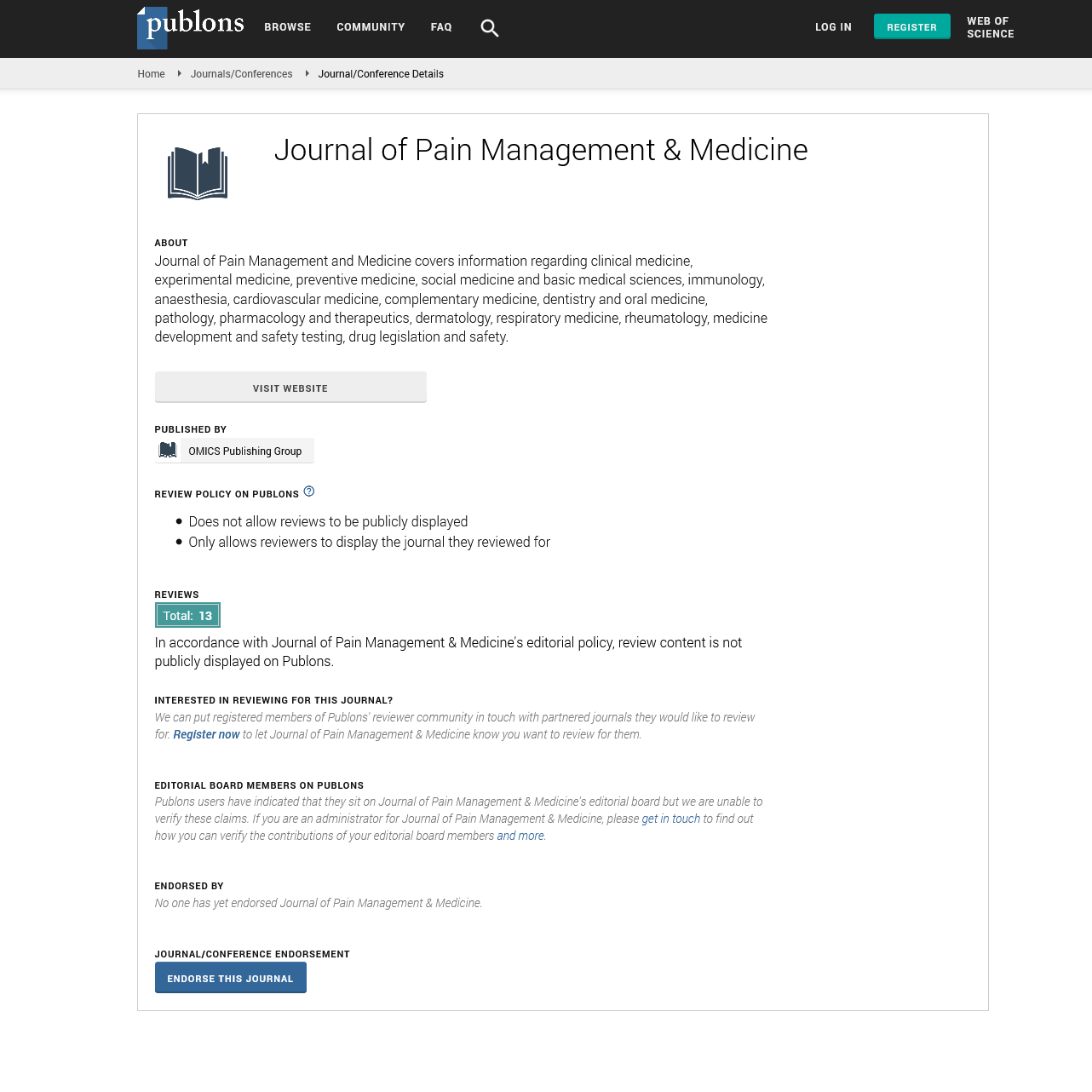Indexed In
- RefSeek
- Hamdard University
- EBSCO A-Z
- Publons
- Euro Pub
- Google Scholar
- Quality Open Access Market
Useful Links
Share This Page
Journal Flyer

Open Access Journals
- Agri and Aquaculture
- Biochemistry
- Bioinformatics & Systems Biology
- Business & Management
- Chemistry
- Clinical Sciences
- Engineering
- Food & Nutrition
- General Science
- Genetics & Molecular Biology
- Immunology & Microbiology
- Medical Sciences
- Neuroscience & Psychology
- Nursing & Health Care
- Pharmaceutical Sciences
Perspective - (2022) Volume 8, Issue 6
Effects of Anesthesiology and its Responsibilities
Kenneth Martinelli*Received: 01-Nov-2022, Manuscript No. JPMME-22-19352; Editor assigned: 03-Nov-2022, Pre QC No. JPMME-22-19352 (PQ); Reviewed: 18-Nov-2022, QC No. JPMME-22-19352; Revised: 25-Nov-2022, Manuscript No. JPMME-22-19352 (R); Published: 05-Dec-2022, DOI: 10.35248/ 2684-1320.22.8.187
Description
The medical specialty of anesthesiology is also known as anaesthesiology or anaesthesia, is concerned with the massive perioperative treatment of patients before, and after surgery. It includes anaesthesia, intensive care medicine, critical care medicine, and pain management. Depending upon the country, a physician specializing in anesthesiology is known as an anesthesiologist, anaesthesiologist, or anaesthetist. In some countries, the terms are associated, while in other countries they refer to different roles, and anaesthetist is used only for nonphysicians, such as patient care anaesthetists.
The study and application of anaesthesia to appropriately facilitate a patient's essential functions during the perioperative period is at the heart of the specialized area. Anesthesiology has developed from an experimental field with non-specialist using novel, established drugs and techniques in the 19th century to now being an industrially produced, secure, and effective field of medicine. Anesthesiologists are the largest single part of the population of general practitioners in hospitals in some countries, and their role can extend significantly beyond the traditional role of anaesthesia care in the surgical procedure, including fields such as pre-hospital emergency medicine, running intensive care units, transporting critically patients between establishments, and rehabilitation programmes to arrange surgical patients.
Many procedures or diagnostic procedures do not require "general anaesthesia," but instead can be accomplished with various forms of general anesthesia or regional anaesthesia, which can be used to induce analgesia in a specific region of the body. For example, during childbirth, a local anaesthetic epidural is commonly administered to the mother to reduce labor pain while allowing the mother to be active and effective in labor and delivery. Anesthesiologists in the United States may also provide non-surgical pain management is known as pain medicine and intensive care units (critical care medicine).
Anesthesiologists play important role in major trauma, rehabilitation, airway management, and having compassion for other patients outside the operating room who have critical emergency situations interacting an immediate risk to life, demonstrating abilities from the operating room and enabling care continuity when patients are moved in for surgery or intensive care. This subspecialty of anesthesiology is known as critical emergency medicine because it includes the provision of pre-hospital emergency medicine as part of ambulance service or emergency medical services, as well as the safe transfer of critically patients from one area of a hospital to another or between healthcare facilities.
Anesthesiologists are frequently employees of cardiac arrest groups and rapid response groups, which are composed of senior clinicians and are immediately, invited when a patient's heart stops functioning or when they deteriorate acutely while in the hospital. Internationally, different emergency medicine models exist: In the Anglo-American model, the patient is easily transported by non-physician providers to secondary and tertiary care, such as an emergency department in a hospital. The Franco-German approach, on the other hand, has a general practitioner, sometimes an anesthesiologist, emerge to the patient and provide controlling treatment in the field. The patient is categorized and aimed to the appropriate healthcare setting.
The role of anesthesiologists providing adequate pain relief for patients in the immediate postoperative period, as well as their expert knowledge in regional anaesthesia and nerve blocks, has resulted in the development of pain medicine as a differentiated subspecialty. Individualized techniques for all types of analgesia, including pain management during childbirth, neuromodulator technological methods such as transcutaneous electrical nerve stimulation or implanted spinal cord stimulators, and specialized pharmacological regimens, are part of the field.
Responsibilities of anaesthesiologists
It is the anaesthesiologist's duty to protect the patient's well-being and stability at all different phases of surgery. They are specifically responsible for: Providing pain relief to assist surgery to be performed. Considering the possibility of complications during surgery. Identifying requirements or factors that can often occur in surgical complications. Pain and stress management during surgical procedures. Ensuring the patient's stability. Providing life assistance to the patient during surgery. Providing the patient with immediate surgical treatment.
Analyzing all medications, the patient is currently carrying in order to avoid dangerous interactions with anaesthetic agents. Managing Anaesthetic Agent Side Effects, and Increasing awareness on the risks of anaesthesia.
Citation: Martinelli K (2022) Effects of Anesthesiology and its Responsibilities. J Pain Manage Med.8:187.
Copyright: © 2022 Martinelli K. This is an open access article distributed under the terms of the Creative Commons Attribution License, which permits unrestricted use, distribution, and reproduction in any medium, provided the original author and source are credited.

